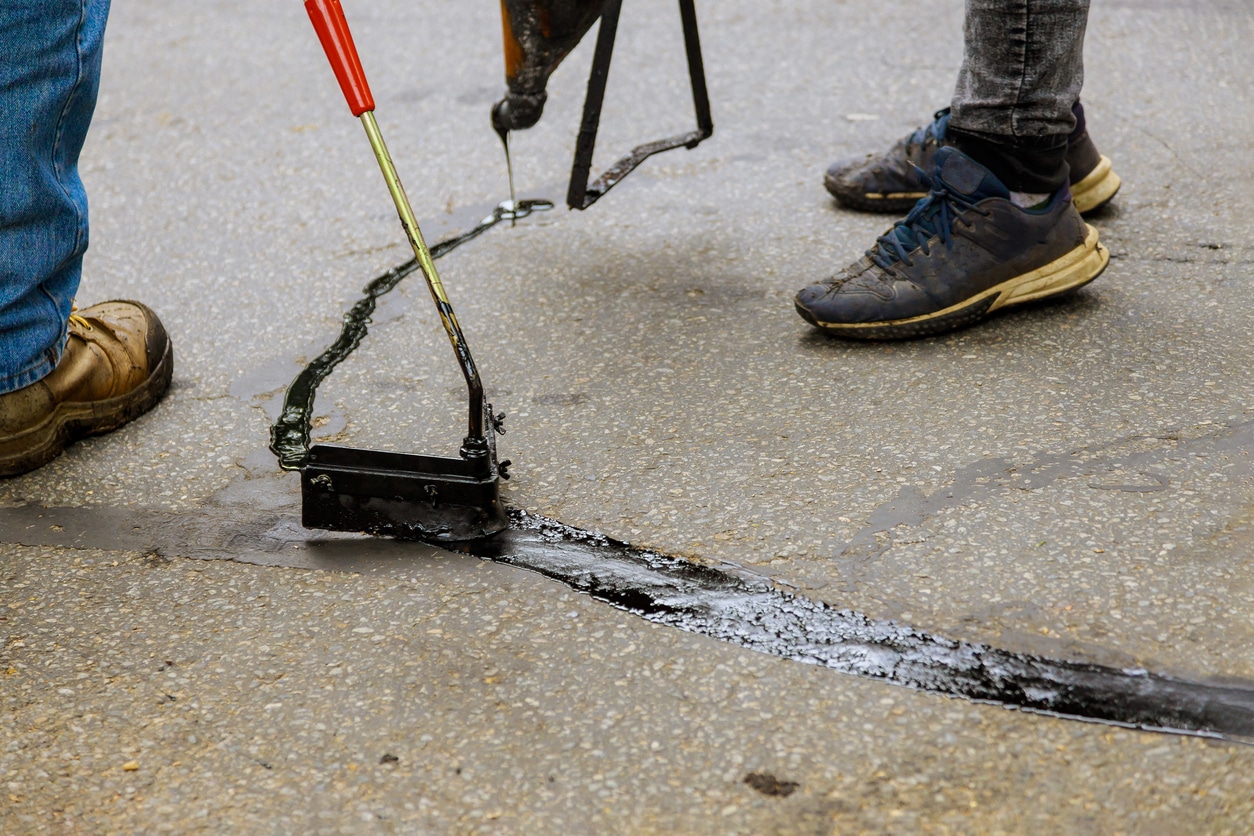Resilient Outcomes: Asphalt Patch Repair Via Precision Sealing
Resilient Outcomes: Asphalt Patch Repair Via Precision Sealing
Blog Article
Cold Mix Asphalt Vs. Hot Mix Asphalt: Which Is Right for You?

Make-up Distinctions
Cold mix asphalt is created by emulsifying the asphalt binder with water and an emulsifying agent before mixing it with accumulation. The hot mix asphalt production procedure involves heating up the accumulation and asphalt binder independently prior to combining them at the asphalt plant.
Additionally, cold mix asphalt has a tendency to be much less dense and extra flexible than warm mix asphalt. This versatility makes it better matched for locations with greater levels of motion, such as driveways or roadways with hefty website traffic. In contrast, hot mix asphalt is known for its high sturdiness and resistance to rutting and splitting, making it a preferred selection for freeways and high-traffic roadways where long life is critical.
Setup Process Differences
The procedure of setting up cold mix and hot mix asphalt displays noteworthy variances in their procedures and requirements. In comparison, hot mix asphalt demands a much more intricate setup procedure. Due to the heating needs, warm mix asphalt installations are usually brought out by experts with specific tools, ensuring a much more structurally sound and irreversible outcome.
Sturdiness and Longevity Aspects
When considering asphalt choices, durability and longevity are crucial variables to assess for long lasting sidewalk performance. Warm mix asphalt (HMA) is understood for its extraordinary sturdiness and durability. The heats during the mixing and laying process allow for far better compaction, leading to a denser and more powerful sidewalk framework. This causes HMA being more resistant to rush hour lots, harsh weather condition conditions, and the effects of aging compared to cool mix asphalt (CMA)
In terms of long life, HMA commonly outperforms CMA as a result of its premium toughness and resistance homes. HMA pavements have a longer life span, needing much less regular repairs and upkeep, which can translate to cost savings over time. Furthermore, HMA pavements are much more easily adjustable to fulfill certain job demands, additionally boosting their durability.
Price Factors To Consider
Thinking about the financial implications is a vital facet when reviewing the choice between warm mix asphalt (HMA) and cool mix asphalt (CMA) for pavement projects. While the initial price of warm mix asphalt is official statement typically more than that of cold mix asphalt, HMA usually gives a much more affordable remedy in the lengthy run due to its premium sturdiness and long life. HMA is recognized for its capability to withstand rush hour loads and harsh weather, minimizing the demand for constant repair services and maintenance. On the various other hand, cool mix asphalt is much more economical upfront yet may require more constant patching and resurfacing, leading to higher maintenance prices in time.
In addition to Our site material expenses, it's crucial to take into consideration the costs associated with installment and upkeep when contrasting HMA and CMA. Inevitably, the decision between HMA and CMA should take into account not just the first price yet also the lasting economic effects to determine the most affordable alternative for the details pavement job.
Environmental Impact Contrast
Comparison of the ecological influences in between warm mix asphalt (HMA) and cool mix asphalt (CMA) exposes distinct distinctions in sustainability practices. HMA production requires high temperature levels, resulting in raised power intake and greenhouse gas discharges. The process additionally launches volatile organic compounds (VOCs) and dangerous air contaminants (HAPs) into the environment. On the other hand, CMA is generated and applied at reduced temperature levels, lowering power use and discharges significantly. The lower manufacturing temperatures of CMA cause lowered fuel usage and reduced levels of CO2 discharges, making it a more eco pleasant this option.
Furthermore, the usage of CMA usually entails reusing existing asphalt pavement, advertising source preservation and decreasing the amount of waste sent to landfills. By opting for CMA over HMA, road building and construction tasks can contribute favorably to environmental preservation efforts.
Verdict
In conclusion, the choice between cool mix asphalt (CMA) and hot mix asphalt (HMA) relies on numerous variables such as make-up, setup procedure, sturdiness, longevity, cost, and environmental impact. asphalt repair. While CMA provides a affordable and quick option for small repair services, HMA guarantees exceptional sturdiness and long life for rush hour locations. Take into consideration these aspects thoroughly to determine which type of asphalt is the right option for your paving needs

Thinking about the economic ramifications is a vital facet when evaluating the option in between warm mix asphalt (HMA) and cool mix asphalt (CMA) for sidewalk jobs. While the initial price of warm mix asphalt is usually greater than that of cold mix asphalt, HMA often provides a more cost-effective option in the long run due to its exceptional durability and durability. asphalt patch repair.Contrast of the environmental influences in between hot mix asphalt (HMA) and cold mix asphalt (CMA) reveals distinct distinctions in sustainability techniques.In verdict, the choice in between cold mix asphalt (CMA) and hot mix asphalt (HMA) depends on numerous variables such as structure, setup procedure, longevity, long life, price, and environmental influence
Report this page